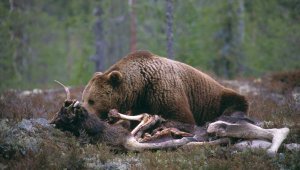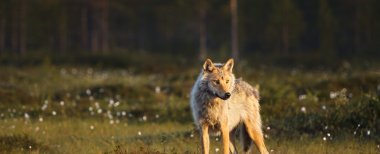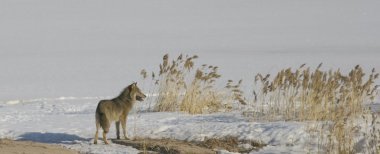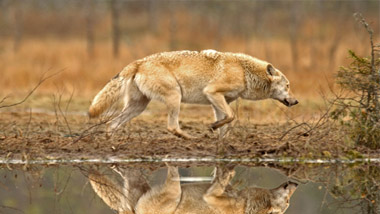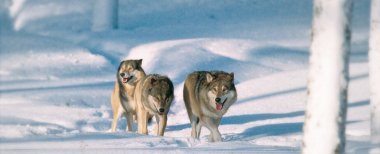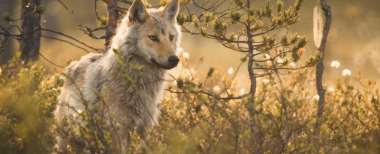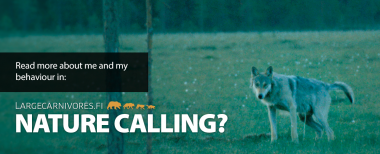Wolf hunting
Wolf hunting is only really possible when there is snow on the ground. The tracks in the snow tell the hunters where the wolves have settled for the day. When their location is known, the wolves are encircled in a circle that is large enough to ensure that the wolves are not scared off too early. When it is certain that the wolves have been completely surrounded, the encirclement is marked with flag line.
Ministry of Agriculture and Forestry proposes: Next winter the maximum of 40 wolves may be killed outside the reindeer husbandry area
Tue Nov 15 10:08:00 2016
An evaluation on the hunting for population management in the two-year period was completed in October. A press release on the evaluation came out on 31 October. Based on the evaluation, wolves killed under derogations to prevent damages, by police order, in traffic, or in illegal hunting outside the reindeer husbandry area will in future also be included in the quota. In granting the derogations the quota would also depend on the types of individuals killed so far. In particular, the Finnish Wildlife Agency would follow the numbers of alpha females killed.
Besides section 41 a, subsection 1, paragraph 2 of the Hunting Act (preventing damage), paragraph 3 of the same section (imperative reasons of public interest including those of a social nature) are taken into account when considering the granting of derogations. This can be used as the criterion when hunting is needed to win better approval of large carnivores among the local people. Flexibility would be allowed to start hunting immediately after the derogation has been granted so that not all derogations are in force at the same time. This enables more accurate estimates of the impact of the derogations on the wolf population. Differentiating the times when derogations are granted allows to better estimate the number of alpha females killed and take this into account in subsequent decisions. In support of decision-making there would be territorial committees and, in some areas, advisory boards on large carnivores that would assess the need to apply for the derogations.
Unlike before, the decree is now proposed to cover two hunting years to allow the Finnish Wildlife Agency as flexible and uninterrupted jurisdiction as possible to grant derogations based on applications that meet the criteria. The decree is to be revised at the end of 2017.
According to a mid-term estimate by the Natural Resources Institute Finland at the end of October there were 23 to 28 packs in Finland, nine of them shared with Russia. In November 2015 the Natural Resources Institute Finland estimated the number of packs in Finland at 22 to 43, ten of these shared with Russia.
A more detailed estimate of the size of the wolf population in terms of both the number of packs and individuals will be available in December 2016. The final estimate of the size of the population will be completed at the end of the hunting season in March 2017.
The deadline for the comments is 9 December.
Inquiries at the Ministry of Agriculture and Forestry:
Jussi Laanikari, Senior Officer, jussi.laanikari@mmm.fi, tel. +358 295 162 432
Sami Niemi, Ministerial Adviser, sami.niemi@mmm.fi, tel. +358 295 162 391
Management plan for the Finnish wolf population
The population management plan for Finnish wolves approved in 2005 was the first of its kind. It was also the first wolf management plan to be renewed. The Finnish Wildlife Agency and Natural Resources Institute Finland worked together to create an updated management plan for wolf, which was then ap...
The Hunting Act and the relevant decrees
The bear, the wolf, the lynx and the wolverine are considered game animals. Legislation concerning game animals is laid out in the Hunting Act. More detailed provisions are found in the Hunting Decree, the Government Decree on Derogations Laid Down in the Hunting Act, and the species-specific Decree...
Sightings as the basis of population estimates
Natural Resources Institute Finland's (Luke) estimates on the numbers of animals are primarily based on sighting data collected by a volunteer organisation consisting of the contact persons of regional game management associations. Other utilised methods include on-the-ground censuses made by hunter...
